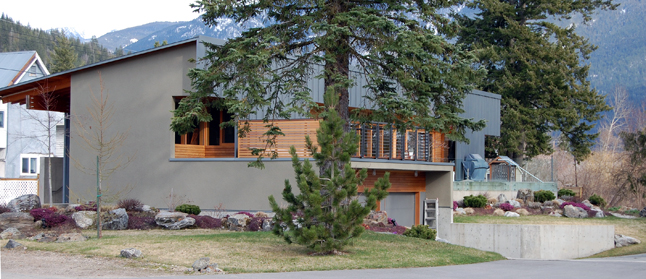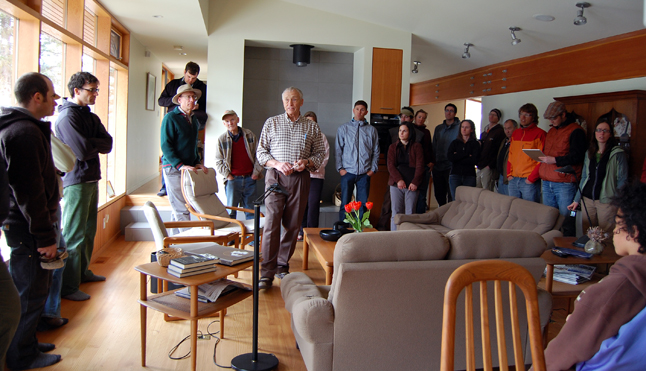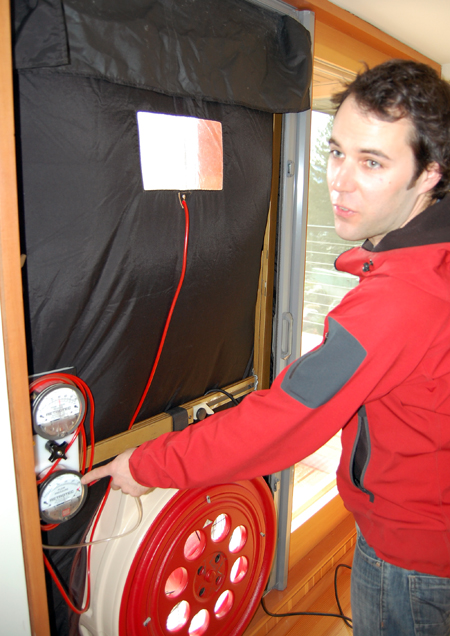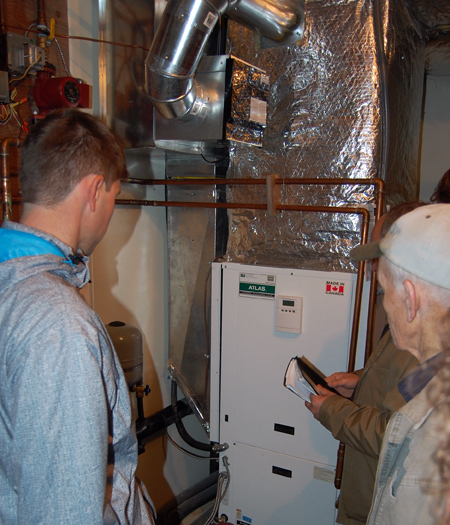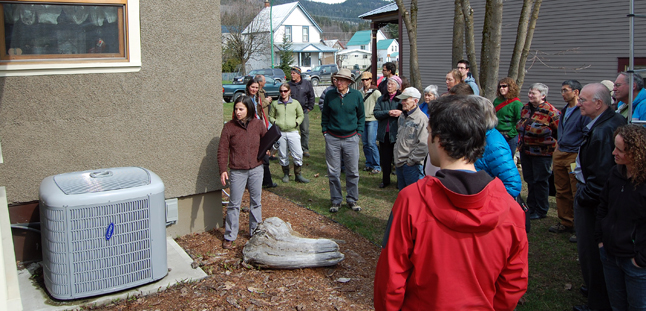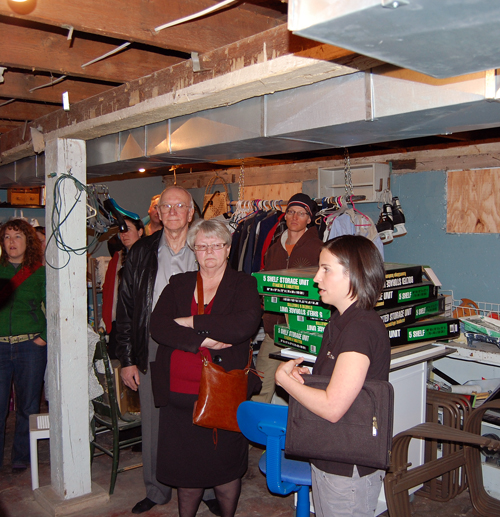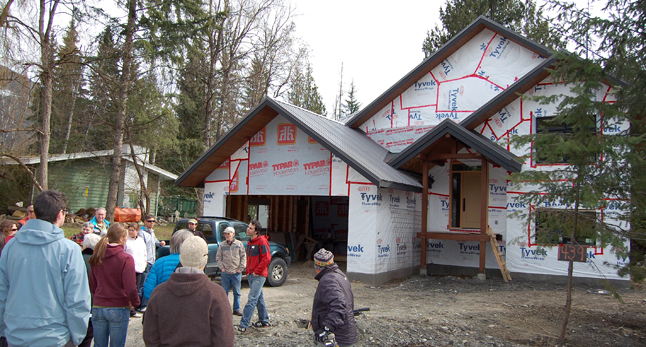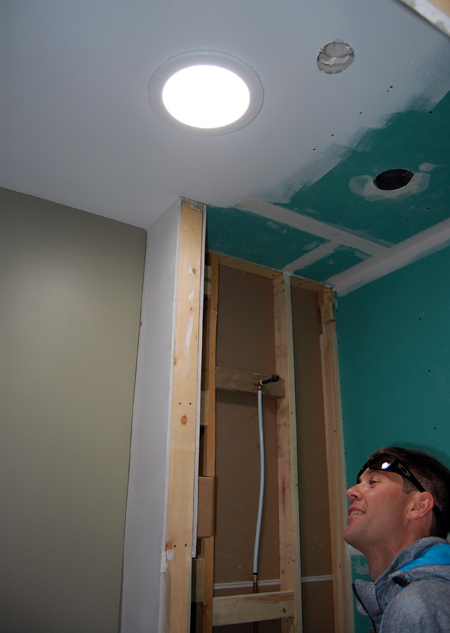By David F. Rooney
If you want your next home — or perhaps even your current one — to be a showcase for green technology be prepared for high costs and be sure you really do your homework in advance. Failure to do that could cost you a lot of money and aggravation.
Those were just two of the lessons learned by the 30 people who went on the North Columbia Environmental Society’s (www.northcolumbia.org) Green House Tour of three local homes, guided by Chantal Keerak and Leigh MacMillan of VerdaTech Energy Management and Consulting Ltd. (www.energyexperts.ca), on Sunday afternoon.
Starting at Geoff and Gwynne Battersby’s home 406 Ford, the curious tour participants learned a great deal from their experience with geothermal technology. Geothermal or ground source heating/cooling makes use of the largest source of energy available — the ground beneath your feet but they are expensive. Geothermal systems cost upwards of $20,000. Federal and provincial governments recognize the important role that geothermal plays in reducing home-energy use and have created retrofit rebate programs to facilitate installation.
The Battersbys installed a geothermal heating and cooling system when they built their home in 2005. However, since then they have had numerous problems with it. That’s not because the technology is problematic. The couple’s issues all revolve around the Salmon Arm-based company that installed it.
“Geothermal is a great technology” but you have to have installers who know what they’re doing, Geoff said.
Jim Coken, president of Okanagan Geothermal (www.okanagangeothermal.net) who was also on the tour. agreed.
“It very important that the contractor installing your system have ticketed plumbers, electricians and certified refrigeration technicians,” he said during a tour of the Battersby home. “If you’re a homeowner you really, really have to do your homework.”
That means knowing as much as possible about the technology and — more importantly — about the contractor, his reputation and his references. The Battersbys also had low-emissivity windows installed in their home. These windows are essentially two panes of special glass with a sandwich of argon gas between them. The south-facing wall of the Battersby home contains a lot of glass and these special panes reflect back a lot of the sun’s rays keeping temperature inside tolerable. During the winter they also reflect back heat generated by a wood-burning stove in their livingroom.
From the Battersby residence, the crowd made its way to Chester and Linda Beerling’s 116-year-old home at 103 Third Street East where Keerak showed them the air-source heat pump that the Beerlings installed. Unlike a geothermal system, which sucks heat out of the ground, the air-source system takes it from the air.
“It’s way more efficient that furnace but generates less heat than a geothermal system because the air is generally cooler than the ground,” she said.
The air-source system loses efficiency as the outdoor temperatures drop so that by the time it hits -5° Celsius there is not enough heat in the air for the system to function. Air-source systems like the Beerlings’ are used in conjunction with an indoor furnace. These systems cost between $10,000 and $12,000. The heat pump by itself costs $7,000.
The Beerlings also installed low-emissivity windows — pretty much what you’d expect from Chester who owns Begbie Glass — and steel doors, though they indicated they were not that happy with those. Fibreglass doors are just as durable and have a higher R value than wood or steel.
But their basement is unfinished and Keerak said that by installing R24 insulation down there they could cut way back on their energy costs as uninsulated concrete walls that are in contact with the ground bleed significant amounts of heat.
Lastly, the group travelled to 123 Pratico in Arrow Heights where MacMillan is currently building his own home. It features in floor radiant heating, light wells and attempts to be, as he put it, “a mix of sustainability and affordability.”
The bottom line was pretty much summed up in an observation by tour participant Edna Mae Johnson.
“A lot of these green technologies are expensive but I think if people do what they can afford it will make a difference,” she said.
